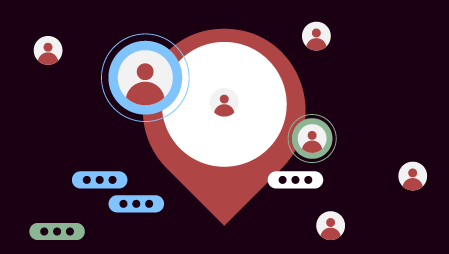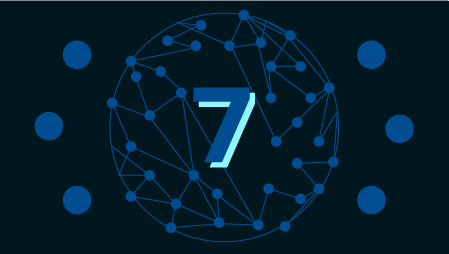Organizations and entities across the globe have been forced to adapt to new work from home/ remote work scenarios. It is clear now that the future of work will be different. But what does this actually mean for the employee experience? NTT Ltd.’s 2020 Intelligent Workplace Report; ‘Shaping Employee Experiences for a World Transformed’ delves into the future of the workplace and found that the pandemic has pushed security to remain at the forefront of the business model. The results in the report illuminate some stark truths about how businesses are struggling to keep up with the changing landscape of the workplace, and offer some insight into how best practices should be adapted for the future.
In an interview with Express Computer, Pranay Anand, Senior Director of Intelligent Workplace, Asia Pacific at NTT Ltd, highlights the key trends that workplaces of the future will focus on, while highlighting how enterprises can make the required changes today that are required to better support the workplace of the future.
Some edited excerpts:
What are the biggest differences that workplaces of the future are going to focus on?
The world of work is facing a watershed. The hasty emergence of distributed workforces in every industry and region has compelled us to reimagine the workplace – where it is, what it looks like and, most importantly, who it is for. Our 2020 intelligent workplace report suggests that 86.6% of organizations say the future workplace will be designed around employee enablement. Flexibility and employee wellness, enabled by digitization, will shape the look of tomorrow’s workplace. To remain relevant and even survive in this complex, challenging environment, organisations need to adopt an employee-centric strategy that enables business outcomes.
The move to providing employees with greater flexibility, choice and authority to make decisions, coupled with investing in digital transformation to improve business agility, has been accelerated by the massive changes brought about by the COVID-19 pandemic – and will continue to play a key role in defining the workplace. Protecting the health and wellbeing of employees will emerge as the number one challenge to optimizing the workplace. Employee Experience (EX)has risen in strategic importance as employees are recognized as being fundamental to building an agile, successful enterprise. Given that property costs could take up a sizeable portion of an organization’s budget, and collaborative technology tools can support a more distributed workforce, we can expect more organizations to be reducing office space and fewer looking to increase space. Offices will be re-imagined to offer flexibility and provide collaborative environments that facilitate creativity, enable social and drive activity-based work initiatives.
What are some immediate changes that companies can make to better support the workplace of the future?
The pandemic created an urgency to digitize for business continuity, but policies influencing the way people work have not caught up. The resulting uncertainty is highest among organizations that have been slowest to adjust policy. Our research indicates 87.7% of organizations agree that COVID-19 has fundamentally changed best practices for workplace processes, methodologies, locations, and designs. This is directly affecting the employee experiences and wellbeing – each recognized as key to achieving business outcomes. Organizations that were further along in their digital transformation to improve agility have generally been more successful in responding to these changes. However, legacy challenges remain and must be addressed alongside challenges that have arisen from new ways of working brought about by the pandemic.
Rigid policies about when people must come into an office will not go far in attracting and retaining talent. Workplace strategies must engender a culture that empowers employees to make decisions, while taking care of their wellbeing and ensuring they have the right technology and tools in place to be successful in their roles, regardless of location Workplace strategies must consider how technology can help attract and retain talent, enable agility, ensure security and compliance, support sustainability and measure the success of workplace initiatives. Sustainability is also a key consideration, as it is taking a more prominent position in how organizations build their brand, attract, and retain talent, differentiate, and reduce operational costs. Organizations that set the foundation for employee wellbeing and EX will be in a stronger position to rearchitect their businesses to be more agile, responsive and, ultimately, more successful over the longer term.
What is the biggest inhibitor to workplace change?
The rapid, global shift to home-working in many industries enabled some form of business continuity as organizations sought to ensure the safety of their employees, contractors, and customers. However, almost four in five (79.3%) say this has been a challenge – and we are now reaching a point where productivity could give way to burnout. Protecting the health and wellbeing of employees has also emerged as the number one challenge to optimizing the workplace
From a security standpoint, 66.9% of organizations are finding it more difficult to spot IT security or business risk brought about by employees when they are working remotely. The rapid shift to remote working has increased the volume and breadth of security attacks as organizations have changed their systems and networks to ensure business continuity. However, only 46.4% have increased their IT security capabilities to keep their organization and employees secure.As a result, security risks are rising, alongside increasing concerns about ethics and data privacy – requiring organizations to determine how
How can security remain at the forefront of the future workplace?
Rapid, reactionary change introduces the highest amount of business risk. One of those business risks includes the organization’s capability to adapt security policies and procedures to that change and continue to protect organizational and customer information.The rapid shift to remote working has made the organization’s perimeter even less marked and more difficult to defend,especially considering the increased breadth and volume of threats and attacks on both enterprise and consumer applications.
Adding further complexity from a security and compliance perspective is the increased use of employees’ collaboration tools (WeChat and WhatsApp, for example) and personal devices, which are not managed through corporate patching and could result in data leakage.As a result, security risks are rising, alongside increasing concerns about ethics and data privacy – requiring organizations to determine how best to containerize work and personal data to protect both the employee and the business.
These changes have forced a radical rethink of how to protect the enterprise, manage cybersecurity risk for a distributed workforce and ensure the organization is resilient in the face of sudden change. Organizations must invest in security technologies for remote workers, but with the acceleration to cloud a more holistic position is required – one that incorporates security at the application layer and infrastructure level through flexible and scalable security solutions (such as SASE). Training on new applications and new ways of working seems to be low on the agenda (in place for just 42.8% of organizations), which presents a high level of risk. Informing employees about updates to security policies, how these will support them in their day-to-day activities – regardless of location – and what is expected of them is paramount to ensuring the desired employee behaviour and, importantly, their buy-in on addressing cybersecurity issues.
A ‘secure by design’ approach is critical to addressing these issues and should therefore be entrenched in every aspect of digitization and workplace strategies from IT and HR policies, (mobile device policy, flexible working policy), right through to the security of applications, networks and storage.
What are the top technology solutions/strategies for increasing productivity and collaboration?
88.5% of organizations have become more reliant on technology since the start of the pandemic. The top five areas of focus reflect a focus on business continuity in the short-term – ensuring networks are giving people access to the applications they require, having systems in place for remote workers to carry out their roles, then addressing security and risk.IT teams across industry sectors have worked around the clock to make technology available to a more distributed workforce. Many organizations succeeded in implementing a ‘technology quick-fix’ to ensure business continuity. Now, they need to focus on formalizing policies for the sustained delivery of digital solutions for the future workplace.Top 5 technology focus areas in workplace strategy include:
1. Mobile and remote working tools and networks
2. Analytics and Internet of Things (IoT)
3. Collaboration Tools
4. Managing security/risk/endpoints
5. Digital events
What role does sustainability play in the future workplace?
Sustainability is a key consideration, as it is taking a more prominent position in how organizations build their brand, attract, and retain talent, differentiate, and reduce operational costs. As organizations look at reshaping workspaces to accommodate employee flexibility and choice,sustainability also must play an important role in workplace design.Sustainability goals rank third as an important part of brand identities, and has a significant role to play in achieving business outcomes – attracting and retaining talent (particularly younger employees), building brand reputation and customer loyalty, and, embedding the procurement of sustainable energy in enterprise service agreements.
Tracking and demonstrating a measurable adherence to wellbeing and sustainability standards will contribute to building a culture that is based on a clear sense of purpose. Implementing workplace modernization programs that enable greater agility, support a distributed workforce, and contribute to sustainability goals, will ensure the long-term future of the organization. Environments – whether intelligent buildings or distributed working spaces – should be used to build and live the organization’s brand,achieve sustainability goals, attract,and retain top talent, and enable a connected workplace experience.




